AI-Enabled Vehicle PCs
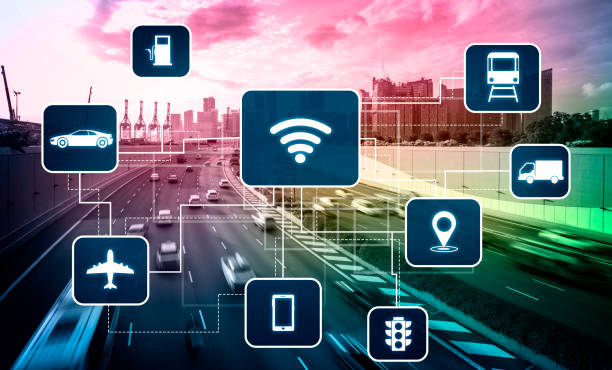
Over the last few years, AI-enabled vehicle PCs have progressively gained prominence across numerous transport trades. The AI in-vehicle PCs use advanced algorithms and machine learning to enable vehicles to perceive, analyse and respond autonomously, thus enhancing functionality, safety, and the overall driving experience. Vehicle computers have proven instrumental in reducing accidents, optimising transport efficiency, and personalising the driver experience. AI-enabled vehicle PCs can also detect vehicle performance issues and alert the driver ahead of time, thus preventing breakdowns and reducing accidents. By improving upon vehicle efficiency and driver safety, it’s little wonder that vehicle/AI integration is revolutionising the transportation industry.
What Are AI-Enabled Vehicle PCs?
AI-enabled vehicle PCs, also known as AI-powered in-vehicle computers, are advanced computing systems integrated into vehicles that leverage artificial intelligence technologies that have become crucial in the advancement of self-driving vehicles. These PCs are designed to enhance the driving experience, enable autonomous driving capabilities, and provide various other helpful features. They employ AI algorithms and deep learning models to process data so that they can analyse the surrounding environment, make real-time decisions, and assist with tasks like object recognition, lane departure warning, adaptive cruise control, and more.
What Kind of Processing Power Do You Need For AI-Enabled Vehicle PCs?
AI-enabled vehicle PCs typically fuse data from various sensors like radar, lidar, and cameras to create a comprehensive awareness of the vehicle's surroundings, enabling perception and intelligent decision-making. This kind of computing necessitates a certain level of processing power to handle the computational demands of AI algorithms and machine learning tasks, though the exact processing power requirements can vary depending on the specific AI applications. Greater processing power, for example, may be required based on the desired amount of autonomy, the volume of data being processed, the applications' real-time requirements, and the total complexity of the AI. The processing capability of AI-enabled vehicle PCs will continue to increase as technology advances, with a focus on boosting computing capabilities in vehicular environments.
How Can Vehicle AI-Enabled Vehicle PCs Be Applied To Other Industries?
AI-enabled vehicle PCs have wide-ranging applications across several industries, as they can deftly increase operational efficiency through enhanced decision-making, real-time data analysis, and increased safety. Some industries that have already implemented AI-enabled vehicle PCs include:

Rail
- AI-enabled railway computers are used for train control and management systems, signalling and interlocking systems, passenger information displays, and video surveillance. These systems enhance safety, optimise train operations, and provide real-time information to passengers.

Surveillance
- Security and surveillance have become standard in various vehicle types, including buses, trains, emergency vehicles, and security/law enforcement vehicles. These surveillance systems can process video feeds in real-time, perform object detection and tracking, and assist in identifying potential threats or suspicious activities.

Public Transport
- The evolving landscape of public transportation necessitates the use of advanced computers capable of handling various tasks such as infotainment, fare collection, surveillance, licence plate recognition, and connectivity. In-vehicle computers are specifically designed to address each of these requirements, meeting the growing demands of the industry.

Traffic Monitoring
- Vehicle PCs with AI capabilities can be deployed for traffic monitoring and management purposes. These systems leverage AI accelerators to perform sophisticated AI tasks effectively and efficiently; they can analyse traffic flow, detect congestion, monitor traffic violations, and assist in implementing intelligent traffic control systems to alleviate bottlenecks and improve road safety

Emergency Vehicles
- A AI-enabled vehicle PC in an emergency vehicle - such as an ambulance or a fire engine - can prove to be an invaluable tool in providing critical emergency assistance and saving lives. Systems such as these can optimise navigation routes, integrate with traffic systems for priority passage, and assist in real-time communication and coordination with emergency services

Fleet Management
- To keep up with the growing demand for efficiency and organisation in the modern world, logistics companies have turned to digitisation as their primary solution. In-vehicle panel PCs are now installed on trucks, ships, and container ports, and play a crucial role in optimising routing & dispatching, monitoring driver behaviour, improving efficiency, reducing fuel consumption, and enhancing the overall performance of the entire fleet.
Scope & Future Demands of AI-Enabled Vehicle PCs
The scope and future demands of AI-enabled vehicle PCs are vast. The exponential advancement of autonomous driving technology combined with the increasing need for connected and intelligent vehicles will likely see such systems play a crucial role in both the near and distant future. AI-enabled vehicle PCs stand to unlock a superior driving experience on a global scale, offering enhanced road safety, consistent fuel efficiency, smart navigation, real-time updates, and a personalised and connected driving experience. There is immense potential for AI-enabled vehicle PCs to transform the future of transportation, and the market demand for these systems is expected to grow significantly as automakers, tech companies, and transportation providers invest in developing autonomous and connected vehicle technologies.
Cutting-Edge AI-Enabled Technologies
We are merely at the dawn of the age of AI, and it’s an age that’s expected to blossom at a dizzying rate. Besides the transportation industry, cutting-edge machine learning is also being developed for and applied to various other fields. Industries spanning healthcare, manufacturing, predictive maintenance, animal conservation, and natural language processing are now benefiting from artificial intelligence that can detect, understand, measure and administer a growing range of applications.
Choosing an AI-Enabled Vehicle PC
Do I Need AI For My Vehicle?
The need for an AI-enabled vehicle PC is entirely situational; it very much depends on your personal preferences, what manner of mobile technology you already have, and whether or not you get around in more than one vehicle. If you are frequently changing vehicles and require a device that moves along with you, then there is likely little point in installing an AI PC in a vehicle that you’re only irregularly using. Conversely, if you’re dedicated to getting around in one vehicle, then an in-vehicle AI PC integration may vastly improve your daily commute. It’s very similar to asking “Do I need a smartphone?” - some people don’t need smartphones, whereas most people find that they enhance our day-to-day capabilities.
How Will it Cope With Shock and Dust Particles?
AI-enabled vehicle PCs are designed to thrive in mobile environments where vibrations and temperature fluctuations are common occurrences. They are built with ruggedized components and enclosures that ensure durability and resistance to shock, and their dust sealing and air filtration systems (such as processor fans and case fans) ensure that dust particles won’t clog your system.
How Will It Be Powered?
The answer to this will depend on what your vehicle is powered by; AI-enabled vehicle PCs are typically powered through the vehicle's electrical system, utilising the onboard power supply. They are designed to operate within the vehicle's power specification; this will commonly include a fluctuating Direct Current (DC) power supply from the vehicle battery or alternative power sources - but again, it very much depends on what kind of vehicle you have.
Do You Need To Ensure The Boards Have Adequate Ventilation and Cooling Components?
Ventilation systems, heat sinks, fans, or other cooling mechanisms are incorporated into the design of the vehicle PC to dissipate heat effectively, ensuring an ongoing reliable operation.
You can scope some of the Tekdis AI-enabled vehicle PCs below, and you can check out the full range of Tekdis’ In-Vehicle PCs & Railway Computers here.
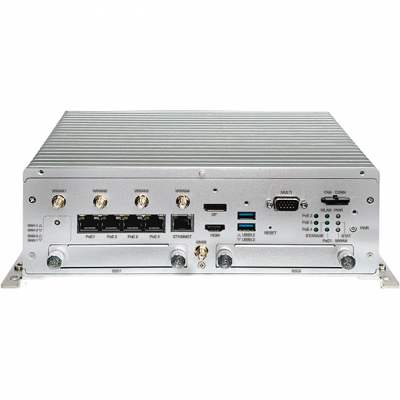
- Powered by 12/13th Gen Intel® Core™ i with DDR5, excellent memory bandwidth, lower latency
- Rich I/Os, 8 x 2.5GbE PoE+, 1 x GbE, 6 x USB 3.2, 2 x CAN FD & 4 x Serials
- Up to 4 WWAN/WLAN combinations for mobile router applications
- Military standards for anti-vibration/shock CE/FCC, UKCA, Emark Certified
- CPU:
12/13th Gen Intel® Core™ i, Intel® R680E chipset - Graphics:
- Intel® UHD graphics 770, 1.55GHz
- Max resolution: 4096 x 2160@60Hz (HDMI)
- DirectX: 12, OpenGL: 4.5 - Memory:
2 x SO-DIMM, DDR5-4800MHz 8GB (default), 64GB in (max.), ECC & dual-channel support
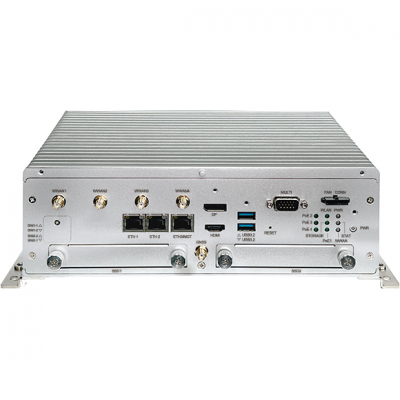
- Powered by 12/13th Gen Intel® Core™ i with DDR5, excellent memory bandwidth, lower latency
- Rich I/Os, 2 x 2.5GbE, 1 x GbE, 6 x USB 3.2, 2 x CAN FD & 4 x Serials, extra 4 x 2.5GbE PoE (option)
- 2 x 2.5” SSD, 1 x NVMe ultra-speed SSD for data integrity
- Up to 4 WWAN/WLAN combinations for mobile router applications
- CPU:
12/13th Gen Intel® Core™ i, Intel® R680E chipset - Graphics:
- Intel® UHD Graphics 770, 1.55GHz
- Max resolution: 4096 x 2160@60Hz (HDMI)
- DirectX: 12, OpenGL: 4.5 - Memory:
2 x SO-DIMM, DDR5-4800MHz 8GB (default) 64GB in (max.), ECC & dual-channel support
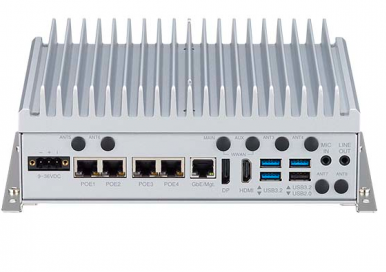
- Intel 11th Gen Tiger Lake UP3, cost-efficient performance
- Compact, rugged and fanless design
- Rich I/Os, 4 x PoE+, GbE, 4 x USB 3.2/2.0 & 2 x RS232/422/485
- 1 x 2.5” SSD, 1 x mSATA and 1 x NVMe SSD for data integrity
- CPU:
Intel® Core™ 11th Gen Tiger Lake UP3 Core i5-1145GRE, base frequency 1.5GHz/ 2.6GHz, 4c, 8 MB Intel® Smart Cache (VTC 7260-5HCIoT) Core i7-1185GRE, base frequency 1.8GHz/ 2.8GHz, 4c, 12 MB Intel® Smart Cache (VTC 7260-7HCIoT) - Graphics:
- Intel® Iris® Xe graphics, 1.3GHz
- Max resolution: 4096 x 2304@60Hz (HDMI)
- DirectX: 12.1, OpenGL: 4.6
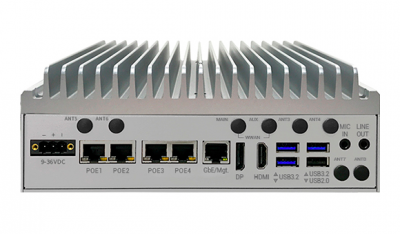
- Intel 11th Gen Tiger Lake UP3, cost-efficient performance
- Compact, rugged and fanless design
- Rich I/Os, 4 x PoE+, GbE, 4 x USB 3.2/2.0 & 2 x RS232/422/485
- 1 x 2.5” SSD, 1 x mSATA and 1 x NVMe SSD for data integrity
- CPU:
Intel® Core™ 11th Gen Tiger Lake UP3 Core i5-1145GRE, base frequency 1.5GHz/ 2.6GHz, 4c, 8 MB Intel® Smart Cache (VTC 7260-5HCIoT)
Core i7-1185GRE, base frequency 1.8GHz/ 2.8GHz, 4c, 12 MB Intel® Smart Cache (VTC 7260-7HCIoT) - Graphics:
- Intel® Iris® Xe graphics, 1.3GHz
- Max resolution: 4096 x 2304@60Hz (HDMI)
- DirectX: 12.1, OpenGL: 4.6

- Built-in NVIDIA® Jetson AGX Orin™ SOM, up to 200/275 TOPS (INT8) Performance
- Designed with rugged, compact and hybrid cooling solutions
- 6-port GbE PoE+ (X-coded) for IP CAM/LiDAR sensors, optional 1-port 10GbE (X-coded)
- HEVC/H.265 hardware DECODE up to 7 x 4K30 performance
- 32GB 256-bit LPDDR5, 204.8 GB/s (ATC 3750-A6CR)
- 8 x cores | 2 Cortex-A78AE CPU clusters (4 cores/cluster), 2.2 GHz
- 1792 CUDA® cores, 56 Tensor cores, 108 Sparse TOPS, 939 MHz
- 200 INT8 Sparse TOPS
- 2 x NVDLA v2.0 engines: 1.4 GHz | 46 TOPS each (Sparse INT8)



